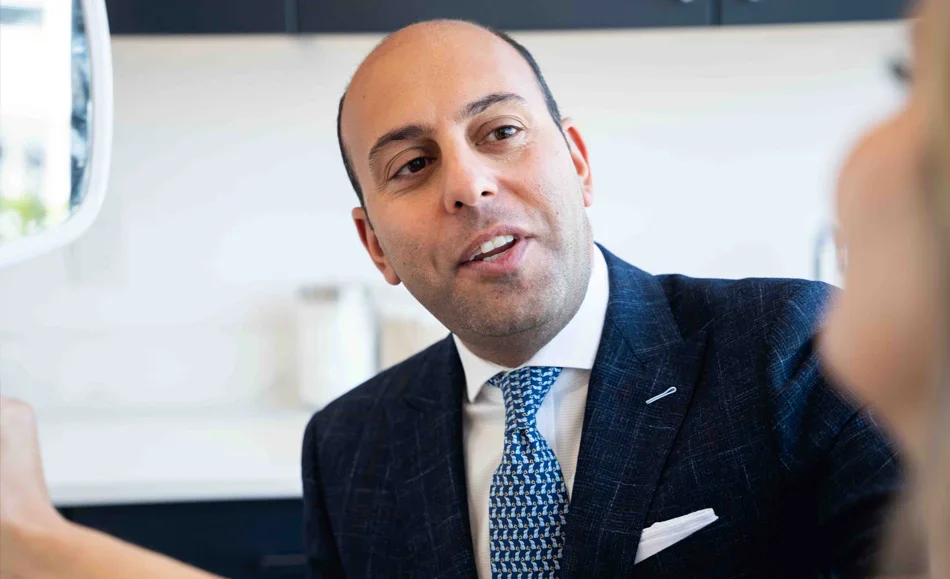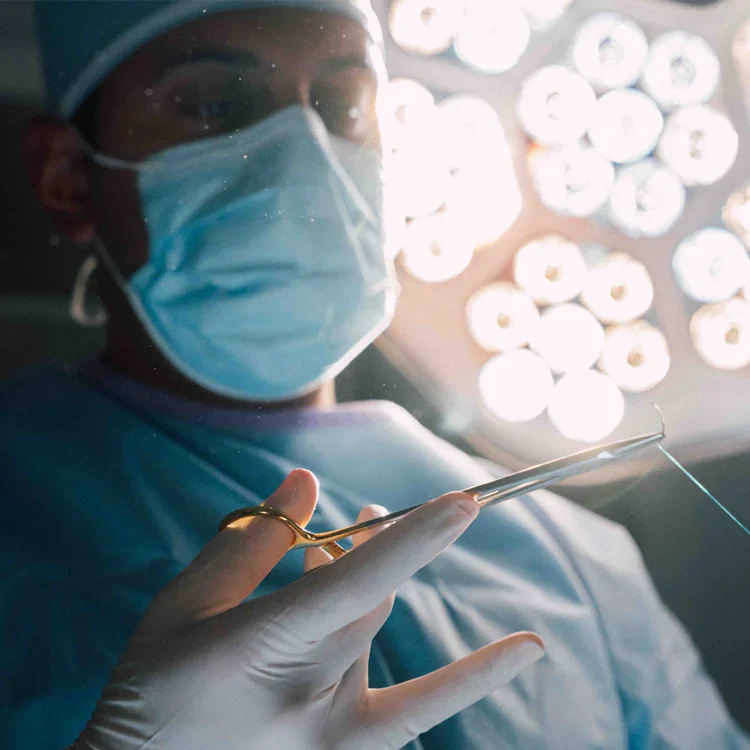Introduction
Gynecomastia Surgery
You’ve heard the colloquial term “man boobs”, referring to excess tissue that can make a male chest look more shapely, like a woman’s. This has a medical term – Gynecomastia – and there is a surgical option for men who are bothered by how gynecomastia makes them feel. In many cases, the cause of gynecomastia is not known, but it is said to be linked to hormone changes. Gynecomastia can also be a side effect of certain medicines. If you are considering Gynecomastia, come and see Dr. Jeremy Nikfarjam and Dr. Goulart at New You Plastic Surgery in Long Island or NYC. Both surgeons aare board-certified plastic surgeons who understand the importance of safe, medical care.

What is Gynecomastia Surgery?
Gynecomastia surgery (male breast reduction) removes excess breast tissue. About 20,000 people get this surgery every year. The procedure may include liposuction, excision (using larger incisions), or a combination of both. People choose to have this procedure to improve self-confidence, enhance their appearance, and reduce discomfort that can result from larger breasts. In severe cases of gynecomastia, the weight of excess breast tissue may cause the breasts to sag and stretch the areola (the dark skin surrounding the nipple). In these cases, the position and size of the areola can be surgically improved and excess skin may be reduced. Plastic surgery to correct gynecomastia is technically called reduction mammaplasty.
What are the benefits of Gynecomastia Surgery?
Patients who come to see Dr. Nikfarjam and Dr. Goulartfor Gynecomastia surgery in Long Island or NYC can attest to the following benefits:
- Confidence in how you look
- Contouring the body to look more masculine
- Confidence in wearing certain types of clothing
- Reduction in excess breast tissue that causes pain
- Confidence to participate in physical activities as well as intimacy
The range of benefits from gynecomastia surgery are each very impactful in a patient’s life. If you have been struggling with the way gynecomastia has affected your self-esteem and your body physically, call New You Plastic Surgery so that Dr. Nikfarjam and Dr. Goulart can take care of you.
Who are the best candidates for a Gynecomastia Surgery procedure?
The following are attributes that can determine whether you are a good candidate for Gynecomastia surgery:
Men whose condition cannot be corrected through alternative medical treatments
- Healthy individuals who do not have a life-threatening illness or medical conditions that can impair healing
- Nonsmokers and non-drug users
- Men with a positive outlook and specific goals in mind for improving the physical symptoms of gynecomastia
- Men who are physically healthy and of relatively normal weight
- Men who have realistic expectations
- Men whose breast development has stabilized
- Men who are bothered by the feeling that their breasts are too large
Adolescents may benefit from surgery, although secondary procedures may be needed in the future should breast development continue.
What’s the
first step?

Gynecomastia First steps
The first step to restoring your masculine body contour and taking care of the Gynecomastia issue in Long Island or NYC is to schedule a consultation. During this session, Dr. Nikfarjam and Dr. Goulart will explain what gynecomastia surgery involves. He will assess your desired outcomes and determine whether you are the right candidate for this procedure. Your consultation session is also your opportunity to discuss any concerns or questions you have. Dr. Nikfarjam will examine you, measure your breast tissue, and also take photos to map out the exact areas they will be performing the surgery. Upon completion of the assessment, he will be able to confirm the price for your surgery.
Before your Gynecomastia surgery in Long Island or NYC, Dr. Nikfarjam may give you a list of instructions to help prepare you for the procedure. This may include fasting for a certain period of time or avoiding certain medications such as blood thinners.
What to expect on the day of Gynecomastia Surgery
When you arrive at our practice on the day of your surgery, Dr. Nikfarjam and Dr. Goulart will walk you through the procedure, explaining his techniques and methods based on the plan you discussed during your consultation. The first step in the procedure is to administer a type of anesthesia.
The second step is to use one of the following, or both, techniques tailored to address your specific type of gynecomastia.
The first technique option is liposuction. In cases where gynecomastia is primarily the result of excess fatty tissue, liposuction techniques alone may be used. This requires the insertion of a cannula, a thin hollow tube, through several small incisions. The cannula is moved back and forth in a controlled motion to loosen the excess fat, which is then removed from the body by vacuum suction.
The second technique option is excision. Excision techniques are recommended where glandular breast tissue or excess skin must be removed to correct gynecomastia. Excision also is necessary if the areola is reduced or the nipple will be repositioned to a more natural male contour.
The third technique option is a combination of both liposuction and excision. Depending on your specific concerns, Dr. Nikfarjam will discuss and recommend the right technique for you.
Once the surgery is complete, the final step is to close the incision. From there, you will be taken into a recovery room as the anesthesia wears off, and Dr. Nikfarjam and his medical team will explain what your post-surgery recovery period will look like.
Gynecomastia Surgery Recovery
Gynecomastia is generally performed in one surgical appointment, where patients return home the same day. During your gynecomastia surgery recovery period, dressings or bandages will be applied to your incisions and an elastic bandage or support garment may be used to minimize swelling and support your new chest contour as it heals after surgery. A small, thin tube may be temporarily placed under the skin to drain any excess blood or fluid that may collect.
Dr. Nikfarjam and his medical team will go over a schedule of instructions that explain how to care for the wound site, change bandages, and which pain medicines are safe to take to aid in your healing. You will be advised to avoid strenuous physical activity for a certain period of time, to prevent swelling, or re-opening of your incision wound.
Following Dr. Nikfarjam’s instructions is essential to the success of your surgery.
How much does Gynecomastia Surgery cost in Long Island, NY?
The cost of Gynecomastia Surgery in Long Island and New York City will vary based on the following factors including the mount of excess tissue being removed, which techniques or combination of techniques are needed to address the issue, the anticipated time needed in surgery based on individual assessment.
During your consultation with Dr. Nikfarjam, he will discuss the specifics of your surgery and determine the price you can expect to pay for gynecomastia surgery. We offer financing for all our patients. Talk to us about scheduling a consultation for your gynecomastia surgery.

Why choose New You?
Dr. Nikfarjam is a board-certified plastic surgeon providing patients in New York with male breast reduction to treat gynecomastia. As a male himself, Dr. Nikfarjam not only understands the male physique but also aesthetic and masculine trends that reflect modern-day gentlemen and hardworking New Yorkers. Dr. Nik is an active member of the most prestigious societies in plastic surgery, including but not limited to ASPS (American Society of Plastic Surgeons, and ASAPS (The Aesthetic Society).
Schedule a
Consultation
To schedule a consultation for Gynecomastia in Long Island with Dr. Nikfarjam and Dr. Goulart, you can call our practice directly, or you can contact us via the patient portal on our website, and share your details so our staff can guide you through the process. Dr. Nikfarjam and Dr. Goulart are excited to meet with you and help you restore your body and your life.
Gynecomastia FAQ’S
Resources
New you resources
We know that the decision to undergo plastic surgery can be a big one. There are many things to consider before your procedure, regardless of whether you live in the greater New York City area or are traveling from out of state. Our knowledgeable and friendly team wants to make your experience as seamless and effortless as possible, which is why we provide some informational resources to make your journey to a new you a little less stressful.
 Out-of-Town Patients
Out-of-Town Patients  Financing
Financing  Leave a Review
Leave a Review